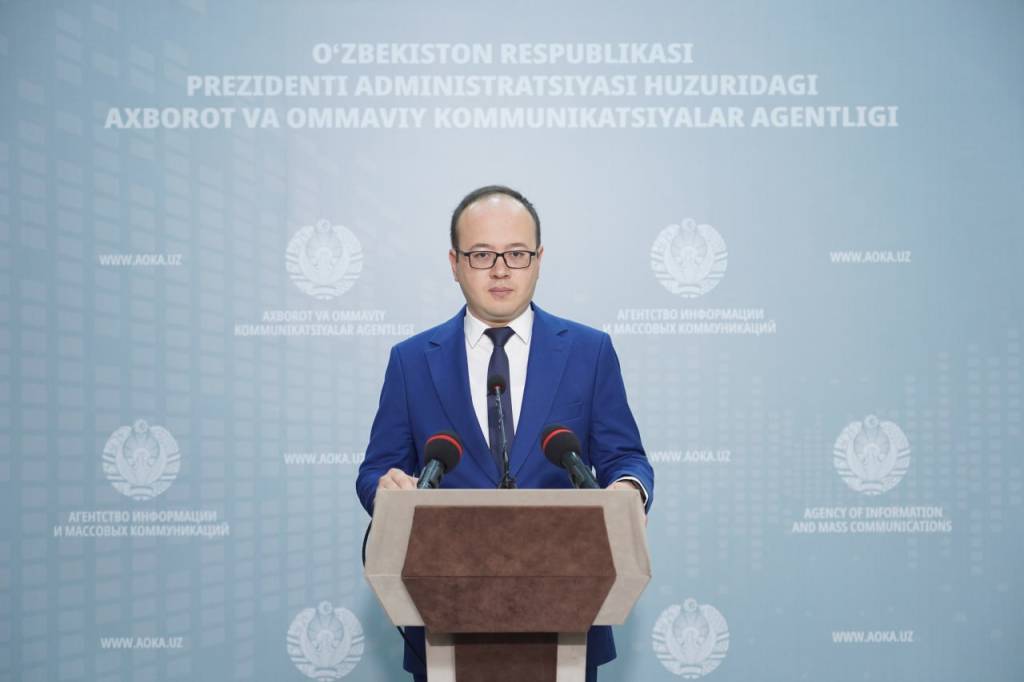
How did the election process unfold in the mahallas of Uzbekistan?
At a briefing held at the Agency of Information and Mass Communications (AIMC), the head of the Information Service of the Mahalla Association of Uzbekistan, Jobir Askarov, stated the following:
– In recent years, a set of measures has been implemented in our country to strengthen the significance of the mahalla institution in public life, gradually develop the system, and further expand its financial capabilities.
Through the initiative and with the involvement of President Shavkat Mirziyoyev, a clear structure for the mahalla system was established. Mahallas have been granted additional powers and opportunities.
As a result, the mahalla has significantly reinforced its role as a social institution capable of effectively analyzing and addressing the issues citizens face. It has become a key element in the reform processes taking place in our society.
Following the introduction of the “Mahalla of Seven” mechanism, it became possible to address all local issues within mahallas through door-to-door visits and a thorough understanding of the lives of each household and family. To this end, roadmaps were developed to resolve the problems of concern to the population, an employment program was prepared, and the “Mahalla Budget” system was implemented.
In our society, the status of mahalla chairpersons has been elevated, and they have been entrusted with coordinating the activities of the “seven” team members. This means that the chairperson must thoroughly understand each team member’s responsibilities and clearly grasp the ongoing reforms in all sectors.
As is known, elections for mahalla chairpersons began on May 1 this year. In accordance with the Law of the Republic of Uzbekistan “On the Election of the Chairperson of the Citizens’ Assembly”, elections were held in all mahallas across the country throughout May and June.
The current elections were organized in accordance with new regulations that reflect democratic values as well as the principles of transparency and openness.
During the election campaign, 14 regional, 208 district (city) auxiliary commissions, and 8,852 working groups were formed. These included 89,578 representatives of government agencies and organizations, deputies, and mahalla activists.
The “Compendium of Legislative Acts” and “Methodological Guidelines” outlined the election procedures. Additionally, infographics and instructions were developed and disseminated to 89,000 members of commissions and working groups.
From March 10 to April 27, as part of the second phase, training seminars were conducted to enhance the knowledge and skills of members of auxiliary commissions and working groups.
More than 133,000 informational materials, such as posters and banners, were produced during the election preparation period to attract residents’ attention and boost their engagement. These materials were displayed on mahalla buildings, streets, shops, public transport stops, and in the entrances of apartment buildings.
Over 2,000 billboards and LED screens on the main streets of cities were used to disseminate election-related information.
As a result of these efforts, according to the schedule approved by the auxiliary commissions, the electoral process was carried out between May 1 and June 17 of this year in 8,852 mahallas across 208 districts and cities of the country.
A total of 2,173,634 citizens participated in the elections. Of the polling stations, 83.7% were organized in educational institutions, 4.4% in cultural centers, 5.2% in mahalla centers, and 6.7% in other locations.
In the elections, 26,334 candidates presented their five-year development programs for their respective mahallas, aligned with the reforms being implemented by the Head of State. Of these, 8,852 were elected as mahalla chairpersons. Notably, 3,962 mahallas elected new chairpersons. Among the elected chairpersons, 1,196 are women, and 306 are district (city) council members. The average age of the elected chairpersons is 51.
In terms of professional background, 2,419 (27.3%) of the elected chairpersons are teachers, 1,705 (19.3%) are economists, 1,212 (13.7%) are engineers, 57 (1%) are doctors, 354 (4%) are lawyers, 420 (5%) are agronomists, and 2,685 (30.3%) represent other professions.
During the electoral process, a 24-hour call center was in operation, accessible via the short number 1276, and designated for receiving reports of legal violations or other incidents.
To date, 161 citizen inquiries submitted to the call center have been referred to the relevant regional commissions.
The electoral processes received extensive coverage in the media. So far, approximately 5,000 pieces of content have been published in various formats, including social media posts, articles, reports, video materials, and other types of content.
Nazokat Usmanova, UzA








